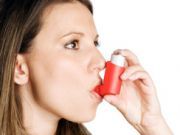Article
Patients Frequently Misuse Inhalers and Epinephrine Autoinjectors
Author(s):
Study results show that incorrect use of inhalers and epinephrine autoinjectors is widespread among patients, which should prompt treating physicians to focus more on educating patients on proper use.

Past studies have documented that most people who carry epinephrine autoinjectors cannot use them properly, but new work from the University of Texas suggests the problem may be significantly worse than anyone realized.
The researchers enrolled 102 adults and children from nearby allergy clinics and set out to determine whether increasing efforts to educate people about anaphylaxis prevention had left the average patient better prepared to use a personal autoinjector.
In previous studies, at least 22% of all participants had been able to use an autoinjector properly. In the Texas study, just 16% of all participants got everything right.
Those who got things wrong, moreover, tended to get them very wrong. More than half (56%) of all the participants who failed to demonstrate perfect technique made 3 or more errors — enough to effectively render their devices useless.
“Most patients,” the study authors wrote in Annals of Allergy, Asthma & Immunology, “would not have benefitted from self-administration of the potentially life-saving treatment if the need arose.”
The most common error, which was committed by 76% of the people who committed any errors, was failure to hold the autoinjector in place for at least 10 seconds after triggering it.
Other common errors were placing the wrong side of the device against the thigh and using insufficient force to trigger an injection. More than 30% of all the patients failed to remove the caps from their autoinjectors before using them.
Analysis performed after the study revealed that some subgroups fared better than others.
Men, who notched 12 flawless demonstrations in 38 tries, performed better (p = .001) than women, who went 4 for 64. Whites (14 of 67) performed better (p = .05) than non-whites (2 of 35). And patients who had yet to celebrate their 40th birthday (10 of 40) performed better (p = .05) than their older counterparts (6 of 62).
Only 1 other factor was significantly associated with a patient’s likelihood of success: medical education. Doctors, nurses and EMTs performed better than the cohort as a whole (p = .03) but even they tended to make mistakes. Just 6 of 18 performed all 5 steps correctly.
Other factors the researchers considered, including general education and years spent carrying an autoinjector, predicted nothing about performance.
Even past use of an autoinjector during an episode of anaphylaxis was not associated with success. Just 2 of the 11 people who reported they had injected themselves in a previous emergency had learned the correct technique by the time they participated in the study.
The overall findings are particularly dispiriting considering that all of the patients were recruited from clinics that specialize in allergy and immunology. Past research has found that patients who receive their autoinjector prescriptions from specialists are significantly more likely to use them correctly than people who receive their prescriptions from emergency rooms or family doctors.
“It is clear,” the researchers wrote, “that there is room for improvement in ensuring that patients are able to correctly self-administer medications. Repeated verbal instruction and, perhaps even more effective, repeated visual education, including demonstration using trainer devices, are highly recommended. Novel methods of providing this repetitive training for patients are needed.”





